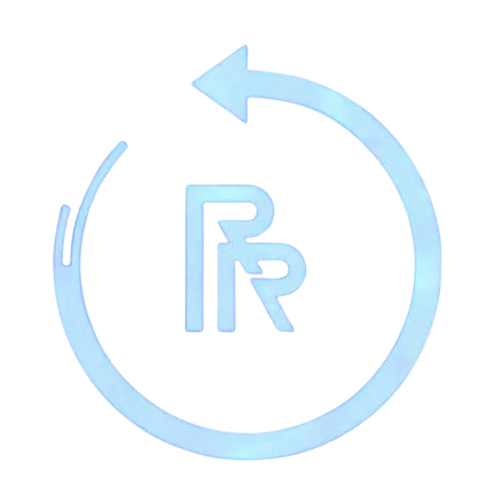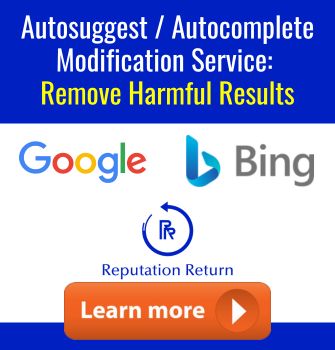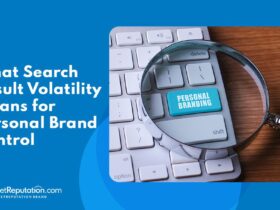In today’s digital age, a company’s reputation is its most valuable asset. According to industry studies, a strong reputation accounts for more than a third of a company’s sales and up to 60 percent of its market value. However, rebuilding a damaged reputation can be costly and time-consuming. Preventing a reputation crisis is far more effective than trying to repair the damage after it occurs.
A company’s reputation is built over time through consistent positive interactions and ethical business practices. When this reputation deteriorates, it can lead to a loss of customer trust, decreased sales, and even a decline in market value. Early intervention in reputation risk management is crucial to safeguarding business success.
A proactive approach to reputation management is essential. Companies that monitor their online presence, engage with stakeholders, and address potential issues before they escalate are better positioned to avoid crises. A comprehensive strategy can help preserve stakeholder trust and secure market position, ensuring long-term success.
Key Takeaways
- A strong reputation contributes significantly to a company’s sales and market value.
- Preventing a reputation crisis is more effective than repairing damage after it occurs.
- Early intervention in reputation management is crucial for business success.
- A proactive approach helps companies avoid costly and time-consuming reputation repair.
- A comprehensive reputation strategy preserves stakeholder trust and market position.
Understanding the Importance of Proactive Risk Management
Modern businesses operate in a landscape where a single misstep can escalate rapidly, often gaining media attention and causing significant damage. Proactive risk management is essential for safeguarding your organization’s long-term reputation and operational continuity.
The Cost of Reputation Damage
Reputation damage can lead to lost revenue and diminished trust. Research indicates that even a single inappropriate communication or targeted attack can quickly spiral into a full-blown crisis, becoming a media sensation. Internal factors, such as employee actions and service quality, directly impact your brand’s reputation. A damaged reputation can result in lost customers and revenue, making it crucial to address these issues early.
Benefits of Early Intervention
Early intervention provides measurable benefits by reducing potential fallouts. Assessing risks before they escalate can protect client and customer relationships. A predetermined plan coupled with prompt crisis response mitigates risk and minimizes damage. By addressing issues early, organizations can preserve stakeholder trust and market position.
Contact ReputationReturn.com for a free and private consultation to discuss your needs and develop a comprehensive risk management strategy.
Defining Reputation and Reputational Risk
In the modern business landscape, a company’s reputation is its most valuable asset. Reputation refers to the collective perception of a brand, shaped by customer experiences, public interactions, and overall business practices. Reputational risk, on the other hand, is the potential for negative events or perceptions to harm this reputation.
Public vs. Digital Reputation
Public reputation is built through direct interactions and word-of-mouth, while digital reputation is shaped by online reviews, social media, and search results. The difference between the two is increasingly pronounced, with digital impressions often holding more sway over consumer behavior.

For example, a single negative review or a viral social media post can escalate into a full-blown crisis, becoming a media sensation. Internal factors, such as employee actions and service quality, directly impact your brand’s reputation.
Long-Term vs. Short-Term Impact
A damaged reputation can result in lost customers and revenue, making it crucial to address these issues early. While short-term damage may lead to immediate financial losses, long-term damage can erode customer trust and diminish market value.
| Aspect | Public Reputation | Digital Reputation |
|---|---|---|
| Formation | Built through direct interactions and word-of-mouth | Shaped by online reviews, social media, and search results |
| Impact | Slow to develop, influenced by personal experiences | Can change rapidly due to online trends and viral content |
| Examples | Customer service quality, employee conduct | Online reviews, social media posts, search engine results |
Contact ReputationReturn.com for a free and private consultation to discuss your needs and develop a comprehensive risk management strategy.
Essential Components of Reputation Risk Management
Effective reputation risk management is the cornerstone of protecting your brand’s integrity in today’s fast-paced digital environment. A well-structured approach ensures that your organization can anticipate, prevent, and respond to challenges before they escalate into crises.
Risk Identification and Assessment
The first step in any robust strategy is identifying potential risks. This involves assessing both internal and external factors that could impact your brand. Internal risks might include employee actions or service quality issues, while external risks could stem from market trends or regulatory changes. Conducting thorough assessments helps prioritize threats and allocate resources effectively.
Preventive Practices to Protect Your Brand
Preventive measures are crucial for minimizing risks. This includes establishing clear communication protocols, training employees on ethical practices, and monitoring online interactions. By fostering a culture of transparency and accountability, you can significantly reduce the likelihood of issues arising.
Crisis Response Planning
Even with preventive measures in place, crises can still occur. A well-defined crisis response plan ensures that your organization can act swiftly and effectively. This plan should outline roles, communication strategies, and action steps to mitigate damage and restore trust.
Data indicates that structured risk management can reduce the likelihood of crisis escalation and shorten recovery time from reputation damage. By integrating these components into your strategy, you can safeguard your brand’s image and maintain stakeholder trust.
For tailored guidance, contact ReputationReturn.com for a free and private consultation to discuss your needs and develop a comprehensive strategy.
Identifying and Assessing Potential Risks
In the ever-evolving business world, understanding potential threats is crucial for safeguarding your organization’s standing. Identifying risks early on can prevent minor issues from escalating into full-blown crises. This section delves into the methods for identifying various risk factors, with a focus on internal versus external threats, and explains how self-inflicted risks can be preemptively mitigated.
Internal Threats and Self-Inflicted Risks
Internal risks often stem from within the organization, such as poor customer service or unethical employee behavior. These self-inflicted issues are frequently preventable with proper protocols in place. For instance, establishing clear communication guidelines and providing ethical training for employees can significantly reduce the likelihood of internal threats. Additionally, ensuring high-quality products and services is critical, as any lapse in quality can directly impact your company’s reputation.
External Factors and Third-Party Challenges
External risks are beyond the organization’s direct control but can still have a significant impact. These include digital attacks, third-party vendor issues, and broader market trends. Conducting a thorough external risk assessment is essential to identify and mitigate these challenges. For example, a data breach from a partner can have severe repercussions, making it vital to assess the reliability and security of all third-party relationships.
Organizations use risk assessments to quantify their vulnerability and plan accordingly. Continuous monitoring is necessary to detect early signs of potential damage. By understanding both internal and external risks, businesses can develop a comprehensive strategy to protect their reputation and maintain client trust.
For tailored guidance, contact ReputationReturn.com for a free and private consultation to discuss your needs and develop a comprehensive strategy.
Strategies for Effective Crisis Management
Crises can arise unexpectedly, and how a company responds often determines the outcome. A well-devised crisis management plan is crucial for navigating these challenging situations effectively.
Developing a Proactive Crisis Plan
The foundation of any effective crisis strategy lies in preparation. A proactive plan should include clear communication protocols and defined roles for all team members. This ensures that everyone knows their responsibilities when a crisis occurs. Regular drills and scenario planning can also help teams stay prepared for unexpected challenges.
Training Employees and Enhancing Communication
Employee training is essential for reinforcing crisis preparedness. By educating staff on ethical practices and clear communication, companies can reduce the likelihood of internal issues escalating. Enhanced internal communication channels facilitate swifter responses, helping to mitigate damage and maintain trust.
During a crisis, maintaining trust and a strong brand image is paramount. Transparent communication and prompt action are key to preserving stakeholder trust. Companies that address issues early can often minimize long-term damage and recover more quickly.
Contact ReputationReturn.com for a free and private consultation to discuss your needs and develop a comprehensive crisis management strategy.
Leveraging Digital Tools and Monitoring
With the advent of advanced digital tools, real-time social media listening and data analytics have become invaluable for monitoring reputational signals and engaging in rapid response. These technologies empower organizations to stay ahead of potential issues, ensuring proactive interventions that safeguard their brand’s integrity.
Social Media Listening and Data Analytics
Social media listening allows businesses to track brand mentions, customer feedback, and industry trends in real-time. By integrating this with data analytics, companies can uncover patterns and sentiments that might indicate emerging risks. For instance, a spike in negative mentions could signal a looming crisis, enabling swift action to mitigate damage.
Using Real-Time Monitoring for Rapid Response
Real-time monitoring is crucial for identifying risks before they escalate. Digital dashboards provide immediate access to critical information, facilitating informed decision-making. This capability is especially vital in today’s fast-paced digital environment, where crises can unfold rapidly. By leveraging these tools, organizations can respond promptly, reducing the likelihood of reputational harm.
| Tool | Benefit | Application |
|---|---|---|
| Social Media Listening | Identifies brand sentiment and trends | Tracks mentions and customer feedback |
| Data Analytics | Uncovers patterns and potential risks | Analyzes data for predictive insights |
| Real-Time Monitoring | Enables rapid response to issues | Provides instant alerts and data access |
For tailored guidance on implementing these strategies, contact ReputationReturn.com for a free and private consultation to discuss your needs and develop a comprehensive strategy.
Case Studies and Real-World Examples
Examining real-world scenarios provides valuable insights into effective strategies for managing reputational challenges. Companies that have successfully navigated crises offer practical lessons for businesses aiming to protect their brands.
Success Stories in Managing Reputational Risk
One notable example is a client who faced a data breach affecting millions of customer records. By responding swiftly with transparency and accountability, they were able to mitigate the damage and restore trust. This case highlights the importance of a well-executed reputational risk management strategy.

Another success story involves a company that proactively addressed a potential crisis through early intervention. Their prompt actions not only prevented further damage but also strengthened their relationship with customers and partners.
Lessons Learned from Past Crises
History teaches us that preparation is key. A major breach in 2018, impacting over 5 billion records, underscored the importance of robust risk management practices. Companies that had implemented strong controls fared better, while others faced prolonged recovery periods.
These examples emphasize the need for continuous improvement in risk management strategies. By learning from past incidents, businesses can better prepare for future challenges and maintain stakeholder trust.
| Case Study | Industry | Key Actions | Outcome |
|---|---|---|---|
| Data Breach Response | Technology | Swift notification, customer support, and transparency | Restored customer trust, minimized financial impact |
| Proactive Crisis Management | Retail | Early issue identification, clear communication, and swift resolution | Enhanced brand loyalty, reduced reputational damage |
Contact ReputationReturn.com for a free and private consultation to discuss your needs and develop a comprehensive strategy.
Conclusion
In today’s competitive landscape, safeguarding your company’s reputation is more crucial than ever. A strong reputation is not just an asset—it’s a cornerstone of trust and customer loyalty that directly impacts your business’s long-term success.
Proactive reputation risk management is essential for preventing crises and maintaining stakeholder trust. By integrating a comprehensive strategy that includes early intervention, clear communication, and a well-defined action plan, businesses can mitigate potential damage and ensure resilience in the face of challenges.
As highlighted throughout this guide, a structured approach to reputation risk management not only protects your brand but also enhances customer trust and loyalty. It’s a proactive investment in your company’s future.
Take the next step in securing your business’s reputation. Contact ReputationReturn.com today for a free, private consultation and discover how we can help you build a robust strategy to safeguard your brand’s integrity and maintain customer trust.
FAQ
How can I protect my business from reputational damage?
We recommend implementing a proactive reputation risk management strategy. This includes regular risk assessments, employee training, and real-time monitoring of your brand’s online presence. Our team can help you create a tailored plan to safeguard your business.
What are the key factors that can harm my company’s reputation?
Common risks include data breaches, negative customer experiences, and unfavorable media coverage. Additionally, internal issues like poor employee conduct or inadequate customer service can also impact your brand’s image. Addressing these factors early is crucial.
How do I assess potential risks to my brand’s reputation?
Start by identifying internal and external threats. Internal risks might involve employee actions or operational failures, while external risks could include market trends or third-party partnerships. Conducting a thorough risk assessment will help you prioritize and mitigate these challenges.
What steps should I take if my business faces a reputational crisis?
Act swiftly by activating your crisis management plan. This includes transparent communication with stakeholders, addressing the root cause, and demonstrating a commitment to resolution. Our experts can guide you through each step to restore trust and protect your brand.
Can I monitor my brand’s online presence effectively?
Yes, by using advanced digital tools and social media listening platforms. These solutions allow you to track mentions, analyze sentiment, and respond promptly to concerns. Regular monitoring is essential for maintaining a positive brand image.
How important is employee training in reputation management?
It is critical. Well-trained employees can prevent many reputational issues by adhering to best practices and upholding your brand’s values. We offer training programs to enhance your team’s awareness and preparedness.
What role does customer feedback play in reputation management?
Customer feedback is invaluable. It provides insights into your business’s strengths and areas for improvement. Addressing feedback promptly can enhance your brand’s image and build stronger relationships with your clients.
How can I measure the success of my reputation management efforts?
Track key metrics such as customer satisfaction scores, social media engagement, and the frequency of positive mentions. These indicators will help you assess the effectiveness of your strategies and make necessary adjustments.
Is it possible to recover from a significant reputational breach?
Yes, with the right approach. A combination of transparent communication, corrective actions, and consistent effort can help restore your brand’s trust and reputation over time. Our experts specialize in helping businesses recover and thrive after a crisis.















